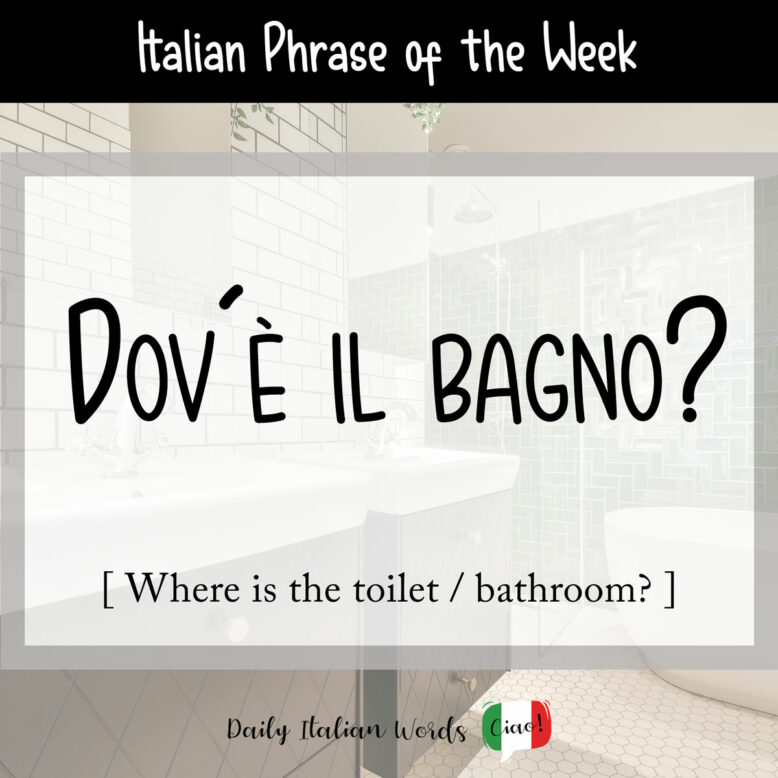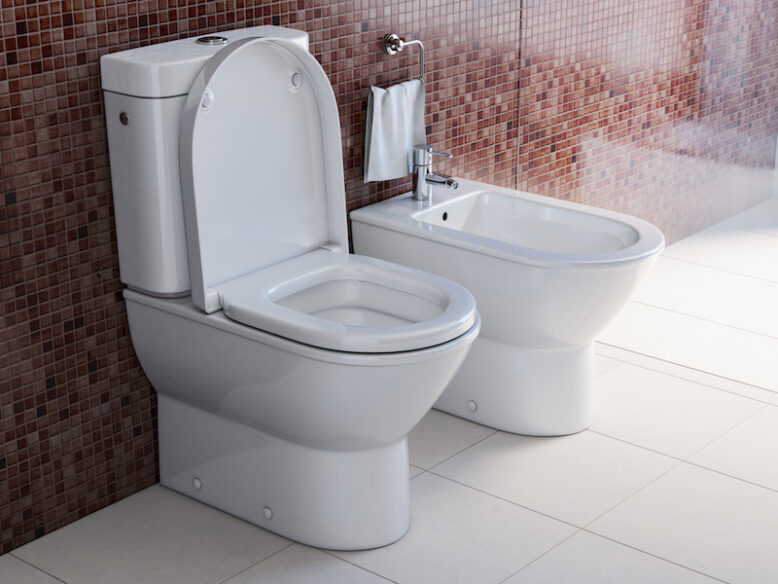We may vary in age, gender, and background, but one thing unites us all: when nature calls, we’ve got to answer! Yet, for learners of a new language, knowing how to ask where the toilet is can be tricky. Some expressions are polite, while others are considered slang and a bit too blunt.
If you want to learn a phrase that suits most situations, we suggest memorising Dov’è il bagno? Let’s break down this phrase into its smaller components, shall we?
Dov’è il bagno?
Where is the toilet / bathroom?

Dov’è is quite simply the combination of the question word dove (where) and è (is). Dove has undergone a process called elision whereby a sound or syllable is omitted – in this case, the word final e.
The word il is the masculine definite article the. If you want to find out more about definite and indefinite articles in Italian, we suggest reading our dedicated post.
In Italian, bagno refers to a single room that encompasses the toilet, bathtub, shower, sink, and bidet. Similar to how bathroom in English can refer to the toilet itself, bagno can indicate this specific part of the bathroom when inquiring about its location.

In modern day Italian society, the word bagno is widely accepted in most contexts, whether you be visiting a friend’s house, at work, or in a restaurant and need help finding the facilities.
If you want to be more formal, however, you have a couple of options.
The first is toilette, which derives from the French word of the same spelling. This word can be used pretty much anywhere except within your own home or someone else’s.
Dov’è la toilette?
Where is the restroom?
The second option is servizi igienici, often abbreviated to just servizi. It literally translates to hygienic services. While it wouldn’t be incorrect to use this term, it tends to be reserved for formal writing. You will mostly encounter this word in written Italian in offices, museums, airports, and similar places. Keep in mind that it is plural, so è (is) becomes sono (are).
Dove sono i servizi igienici?
Where is the restroom?
There are other words used to refer to the toilet, including WC (pronounced “vuu-chi”) and water (pronounced “vater”), but you wouldn’t use them when asking about its location. Note that while water actually indicates the toilet bowl, it is often used to talk about the toilet as a whole.

If you are feeling ambitious, you could also try asking the following questions.
Mi scusi, dove posso trovare il bagno?
Excuse me, where can I find the bathroom?
Posso andare in bagno?
Can/May I go to the bathroom?
Heather Broster is a graduate with honours in linguistics from the University of Western Ontario. She is an aspiring polyglot, proficient in English and Italian, as well as Japanese, Welsh, and French to varying degrees of fluency. Originally from Toronto, Heather has resided in various countries, notably Italy for a period of six years. Her primary focus lies in the fields of language acquisition, education, and bilingual instruction.


